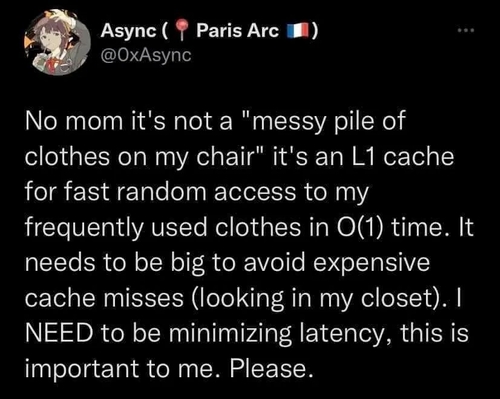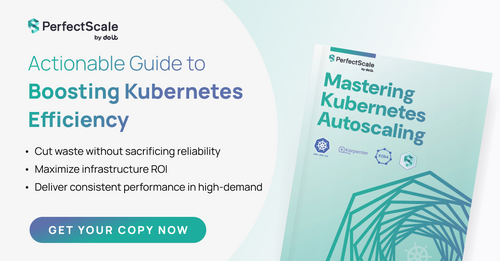🔗 View in your browser. | ✍️ Publish on FAUN.dev | 🦄 Become a sponsor
Kaptain
#Kubernetes #Docker #DistributedSystems
📝 The Opening Call
Edge computing is kicking up dust—it’s a battleground where nimbleness clashes with unyielding security demands, and Chick-fil-A trusts Kubernetes to wrangle its kitchens while the Air Force chisels global deployments. Meanwhile, secrets run amok, Kubernetes gets tougher, and AI cloud services face dark days with potential vulnerabilities lurking like silent predators. It’s high stakes with a dash of excitement, waiting to burst onto your next project.
🏢 6 Design Principles for Edge Computing Systems
⚔️ An Intro to Kubernetes Hardening
👻 Automated Kubernetes Threat Detection with Tetragon and Azure Sentinel
🔑 Building Scalable Secrets Management in Hybrid Cloud Environments
💥 Critical NVIDIA Container Toolkit Flaw Allows Privilege Escalation on AI Cloud Services
🔍 Debugging the One-in-a-Million Failure: Migrating Pinterest’s Search Infrastructure to Kubernetes
📜 GitOps continuous delivery with ArgoCD and EKS using natural language
🔄 Kubernetes Scaling Strategies
🔬 Kubernetes Observability with OpenTelemetry | A Complete Setup Guide
👾 Unpopular opinion: Kubernetes is a symptom, not a solution.
Read. Think. Ship. Repeat.
Have a great week!
FAUN Team
🏢 6 Design Principles for Edge Computing Systems
⚔️ An Intro to Kubernetes Hardening
👻 Automated Kubernetes Threat Detection with Tetragon and Azure Sentinel
🔑 Building Scalable Secrets Management in Hybrid Cloud Environments
💥 Critical NVIDIA Container Toolkit Flaw Allows Privilege Escalation on AI Cloud Services
🔍 Debugging the One-in-a-Million Failure: Migrating Pinterest’s Search Infrastructure to Kubernetes
📜 GitOps continuous delivery with ArgoCD and EKS using natural language
🔄 Kubernetes Scaling Strategies
🔬 Kubernetes Observability with OpenTelemetry | A Complete Setup Guide
👾 Unpopular opinion: Kubernetes is a symptom, not a solution.
Read. Think. Ship. Repeat.
Have a great week!
FAUN Team
⭐ Patrons
info.perfectscale.io
This practical guide breaks down the most effective autoscaling tools and techniques, helping you choose the right solutions for your environment.
No more manually managing clusters, struggling with traffic spikes, or wasting resources on over-provisioned systems!
Get your free copy now!
No more manually managing clusters, struggling with traffic spikes, or wasting resources on over-provisioned systems!
Get your free copy now!
ℹ️ News, Updates & Announcements
github.com
Bitnami clears out the virtual cobwebs by tucking its old Debian-based images into a digital time capsule, also known as the Legacy repository. It throws a friendly nudge to devs: get with the times and swap to the "latest" images. In production-ville, serious users should hitch a ride on the Bitnami Secure Images train—a ticket to all the support and stability joys that live beyond the community-tier wilderness.
cncf.io
Kubernetes 1.33 rolls out with a security upgrade. It flips the switch on user namespaces by default, shoving pods into the safety zone as unprivileged users. Potential breaches? Curbed. But don't get too comfy—idmap-capable file systems and up-to-date runtimes are now your new best friends if you want to ride this upgrade.
kubernetes.dev
Kubernetes v1.33 quietly rides the post-quantum security wave, thanks to Go 1.24's hybrid key exchanges. Watch out for version mismatches, though—those could sneakily downgrade your defenses.
thehackernews.com
A critical container escape vulnerability (CVE-2025-23266) in NVIDIA Container Toolkit poses a severe threat to managed AI cloud services, earning a CVSS score of 9.0 out of 10.0. This flaw allows 37% of cloud environments to potentially be accessed by attackers using a three-line exploit, enabling complete server takeover through a simple Dockerfile manipulation.
opensource.googleblog.com
DraNet slaps networking woes straight out the door. It natively handles RDMA in Kubernetes, so you can toss those convoluted scripts. Now in beta and weighing only 50MB, it offers deployments that are lean, speedy, and unyieldingly secure.
🐾 From FAUNers
faun.pub
Terraform, your trusty sidekick for taming infrastructure, makes setups seamless. But don't let your guard down: there's a sneaky race condition lurking between S3 Bucket Versioning and Object Lock, ready to ignite havoc. Keep secrets safe with HashiCorp Vault. Fetch them live and keep those state files free of snoopers.
🔗 Stories, Tutorials & Articles
developers.redhat.com
Red Hat OpenShift and NIC bonding for high availability is getting popular in data centers. Consider layer2/layer2+3 configurations for balanced traffic distribution across bonded links. Layer3+4 hashing offers highest throughput but may lead to out-of-order packets due to 802.3ad non-compliance. It all boils down to your application's network usage and demands.
devtron.ai
Devtron is Kubernetes monitoring on overdrive. It ropes in Prometheus and Grafana, automates the pesky setup, and shoots real-time insights straight into a slick UI. Effort? Minimal. Results? Maximal.
infoq.com
Zendesk has tossed out the old playbook with its Foundation Interface. Forget the guessing games of infrastructure provisioning; engineers now scribble their demands in YAML, and voilà—magic happens. Kubernetes operators step in, spinning these requests into Custom Resources. It’s self-service nirvana, no human handholding needed. Meet the savvy "genie and helpers" model. It doesn't just nod and smile; it checks, chops, and tracks every resource request, linking up smoothly with Spinnaker pipelines. It's the latest chapter in the tech world’s love affair with Kubernetes-based IDPs, championing self-reliance and keeping policies tight.
csoonline.com
GitGuardian's 2024 report sounds the alarm: 23 million secrets slipped through leaks in 2023. A whopping 70% hung around for months. Talk about a security nightmare! Enter HashiCorp Vault and Akeyless. These tools mastered the multi-cloud juggling act and automated secrets management. Result? A satisfying 90% cut in static secrets.
couchbase.com
Eviction Reschedule Hook sticks its nose in Kubernetes eviction requests, letting operator-managed stateful apps wriggle their way through node drains without breaking a sweat. 🎯
aws.amazon.com
Amazon EKS cranked up its gear—you can now spin up clusters with a staggering 100,000 nodes at your beck and call. That’s a cozy home for either 1.6 million AWS Trainium chips or 800,000 NVIDIA GPUs. Welcome to the playground for ultra-scale AI/ML.
Performance soars skyward by ditching old etcd consensus and diving into in-memory databases. Watch out for Karpenter: it's got a flair for spinning new static node pools and turbocharging capacity. Deploy at eye-watering speeds: up to 2000 nodes per minute. It's unapologetically fast.
Performance soars skyward by ditching old etcd consensus and diving into in-memory databases. Watch out for Karpenter: it's got a flair for spinning new static node pools and turbocharging capacity. Deploy at eye-watering speeds: up to 2000 nodes per minute. It's unapologetically fast.
cncf.io
Cozystack wants local cloud providers to flex by delivering Kubernetes-based managed services without breaking a sweat. Who needs hyperscalers anyway? Built on open-source goodness, it ditches vendor lock-in, giving these providers the freedom to roll out next-gen infrastructures in style.
medium.com
Migrating Pinterest's search infrastructure to Kubernetes—toasty, right? But it tripped over a rare hiccup: sluggish 5-second latencies. The culprit? cAdvisor, overzealously spying on memory like a helicopter parent. Flicking off WSS? Problem evaporated.
signoz.io
OpenTelemetry delivers a full observability package for Kubernetes—traces, metrics, logs—all without handcuffs to a single vendor. Deploy your own OTEL Collectors on Minikube using Helm charts. Dive into node and pod-level metrics and grab those can't-miss Kubernetes cluster events.
thenewstack.io
Edge systems each have their eccentricities, needing solutions as unique as they are: Chick-fil-A swears by Kubernetes to herd its standard operations. The Air Force, however, prizes nimbleness and ironclad security for deployments scattered across the globe. Smart edge management? It’s a mix of Infrastructure as Code, telemetry magic, and sharp tools like TPM/HSM. All to wrestle down security puzzles and logistical chaos, always poised to flex with scale and location quirks.
newsletter.systemdesigncodex.com
Horizontal Pod Autoscaler (HPA) cranks up pods based on CPU, memory, or custom quirks. A dream for stateless adventures, but you'll need a metrics server. Vertical Pod Autoscaler (VPA) fine-tunes CPU and memory for pods. Works like a charm for jobs where scaling out is sketchy, though it demands restarts and tends to bicker with HPA settings. Cluster Autoscaler expands worker nodes through cloud provider APIs—a match made in heaven for cloud configurations with automatic provisioning.
saraswathilakshman.medium.com
Kubernetes security tools usually drop the ball. Enter the dynamic duo: Tetragon wielding eBPF magic for deep observability, and smart notifications for sniper-precise alerts. Fluent Bit pairs with Azure Logic Apps in an automated setup so you can hunt down threats in real-time. Not a drop of sweat needed.
aws.amazon.com
ArgoCD MCP Server teams up with Amazon Q CLI to shake up Kubernetes with natural language controls. Finally, GitOps that even the non-tech crowd can handle. Kiss those roadblocks goodbye. No more brain strain from Kubernetes. Now, plain language syncs apps, reveals resource trees, and checks health statuses.
andreafortuna.org
Kubernetes is not the miracle cure everyone claims. It's more like a bucket of complications, allegedly cramping cloud innovation just to wrangle unruly containers. Ditch the YAML circus and zero in on platforms like WASI and fresh concepts like Unison. These offer semantic, cross-language cloud deployments without the migraines.
🎦 Videos, Talks & Presentations
youtube.com
Kubernetes' security importance grows as it powers modern infrastructure. Learn hardening basics to secure clusters and protect applications.
⚙️ Tools, Apps & Software
github.com
A real-time, interactive CLI dashboard for monitoring Docker containers. View status, health, CPU, and memory usage with a clean, color-coded interface. Supports docker-compose grouping and hotkeys for logs, restarts, and shell access — all from the terminal.
github.com
Push docker images directly to remote servers without an external registry
🤔 Did you know?
Did you know that Dropbox moved over 500 PB of data away from AWS S3 into its own global storage system called Magic Pocket? They replaced traditional 2× replication with Reed–Solomon 6+3 and locally optimized reconstruction codes—achieving around 1.33× storage overhead versus 2×—while maintaining ≥12 9s durability and 99.99% availability. This migration unlocked major cost savings, better HDD utilization, full control over performance, and faster data access—all without sacrificing reliability.
🤖 Once, SenseiOne Said
"Every line of code is a potential security breach, yet it's the trust in our abstractions that fuels progress."
— Sensei
— Sensei
👤 This Week's Human
Spotlight on Dorian Lazzari , the mind behind Cubish and its bold plan to grid the Earth into 5.1 trillion geolocated cubes. As CEO, Dorian shapes a future where digital spaces lock into real-world locations through Cube Domains. His push toward a Spatial Web brings a world where places and data fuse. Known for sharp problem-solving and team-building grit, Dorian steered Cubish from stealth mode to a patent-pending stage. The result? A multi-layered digital shell, ready to snap into tomorrow’s immersive tech.
😂 Meme of the week


